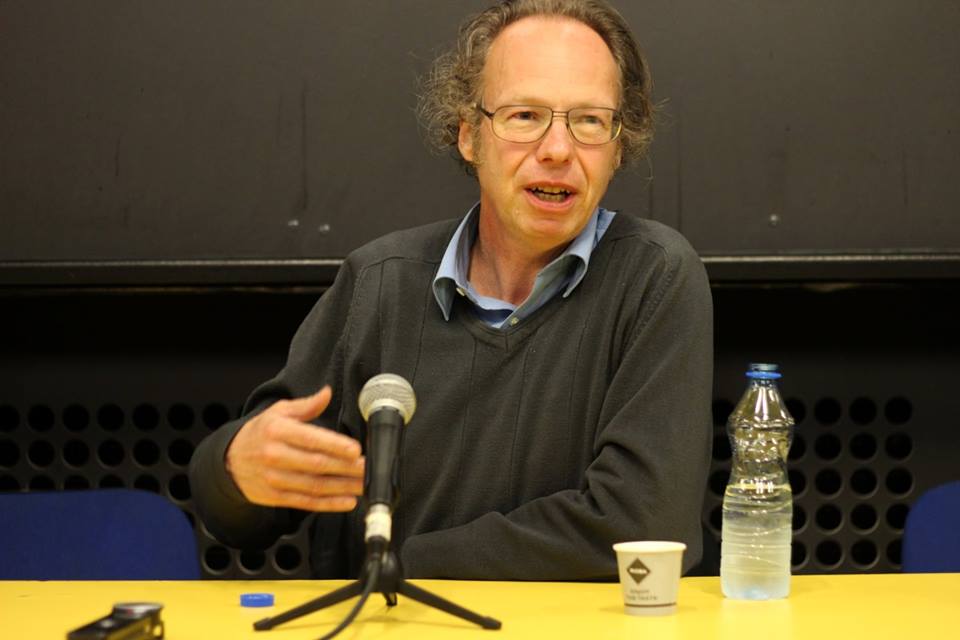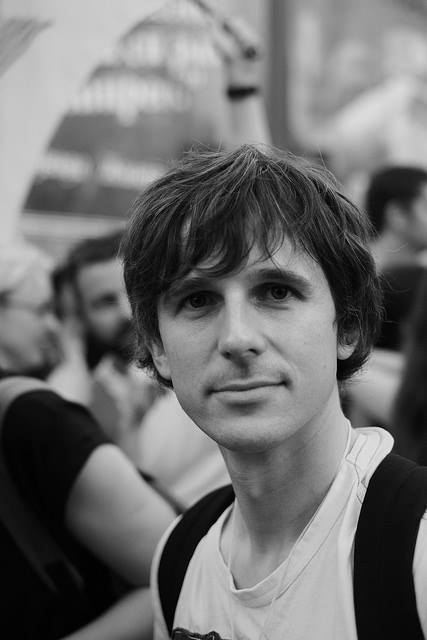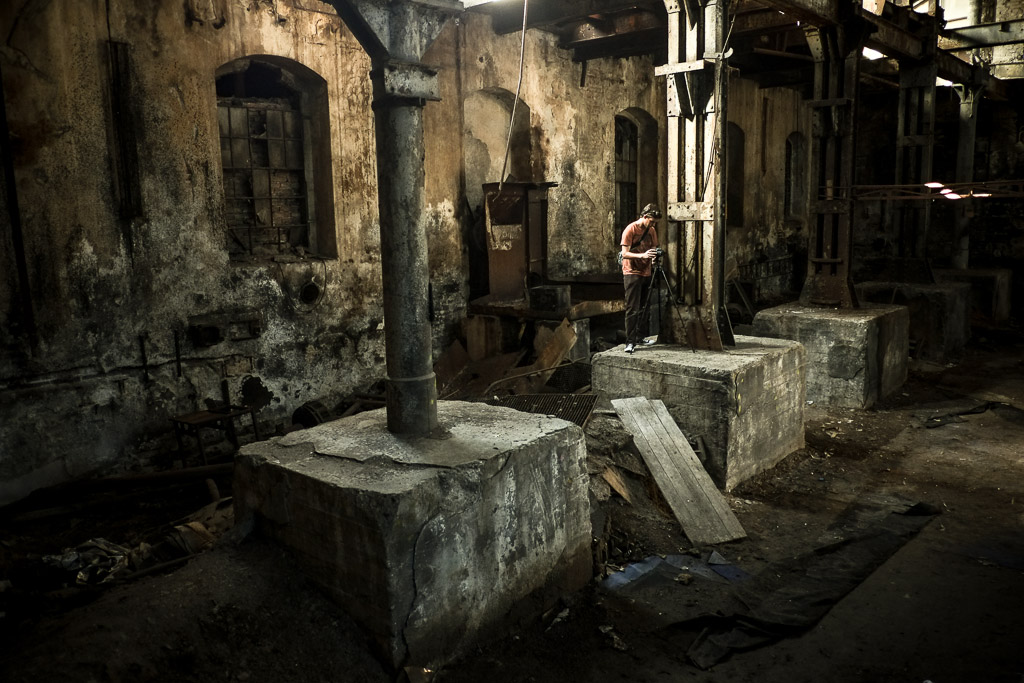
Joachim Becker, professor of Economics and Business at Vienna University and deputy head of the Institute for International Economics and Development, was a guest of the conference Social Justice: New Perspectives, New Horizons in Belgrade. Becker’s research interests include development economics, theory of the state, regional integration and disintegration, Mercosur, Turkey, Eastern and Southeastern Europe. The title of the lecture Becker gave in Belgrade was Restructuring Production – Options for the Central Eastern and Southeast European Periphery. In this interview, taken by András Juhász for www.masina.rs, he discusses the economic processes associated with the dissolution of the Socialist Federal Republic of Yugoslavia and its relevance for understanding the current situation in the successor states of the former federation.
 András Juhász is a political activist from Zrenjanin, Serbia. He is member of the editorial board of portal masina.rs
András Juhász is a political activist from Zrenjanin, Serbia. He is member of the editorial board of portal masina.rs
In your opinion, what have been the key economic changes in the former Yugoslav countries since the dissolution of Yugoslavia?
State-socialist Yugoslavia already experienced problems of peripheral European or semi-peripheral countries on a world scale, and one of the key problems of Yugoslavia was the high import dependence. Yugoslavia suffered from a chronic deficit on the current account, which was partially financed in the 1970s by taking foreign credits. When the international interest rates increased massively, Yugoslavia faced a severe external debt crisis in the 1980s, which was to become a decade of economic crisis and austerity measures. Each of the republics tried to reduce the effect of the crisis on their own behalf, usually by measures against the other republics. The internal uneven development of Yugoslavia was deepened by the crisis and it was the republics and autonomous regions in the south which suffered particularly. On the economic level Slovenia was the country which dealt most successfully with the disintegration process. It was the only successor country with a systematic transformation strategy, and its industry suffered less than those of the other republics hit by the war. In the case of Serbia the sanctions as well had a severe impact on the productive structure of the 1990s, and severe deindustrialization occurred.
Why was Slovenia the only republic with a systematic transformation strategy?
Slovenian industry had already exported significantly to Western Europe, the companies were not of extremely large scale, but rather of medium scale, and the sectoral structure proved more adequate for the capitalist conditions. These industries were built in relatively small towns, had very strong local links, and people had regarded the industry as their own. Jože Mencinger, the well-known Slovenian economist, said that he was surprised in the early 1990s to see how strong the attachment of the local population was to their industries. Hence, the pressure to maintain those industries was very strong. In addition, the oppositional movement in Slovenia had critical left wing elements as well. Furthermore, Slovenia was the only state where the trade unions had a real impact on policy making, where a mild form of capital controls were introduced and which pursued a pro-industrial policy for almost 15 years after the dissolution of the federation.
Let us return to the economic changes after the dissolution, to the 1990s and 2000s.

Much of the 1990s was marked by a process of economic destruction. It was not a process of accumulation because there was hardly any accumulation at all; it was not a growth regime. After the decline was stopped, the main source of growth was rapidly growing indebtedness of households, which stimulated consumption. Thus, the middle class debtors incurred significant foreign exchange debts, but obviously their incomes were not in Swiss Franc or Euro, but in Kuna or Dinar, hence any depreciation of the exchange rate would prove to be a problem for them. To prevent this, the exchange rate policies were geared towards maintaining the exchange rate and that made exchange rates unfavorable for local production and favorable for import. Imports boomed, industrial recovery was very slow and incomplete and with it the current account deficits were between high and very high, usually more than 10%. In Croatia a bit less than 10%, in Serbia at the beginning of the crisis approximately 17%, in Montenegro at times it was even around 30% and that is so high that it cannot be sustained. From 2004 to 2008 credits expanded very rapidly in Slovenia as well, which left the Slovenian banks with a lot of debt and in the end with a lot of credits which the debtors proved to be unable to make the interest payments and repayments in the crisis.
At the beginning of our conversation you’ve stated that Yugoslavia had already experienced problems of peripheral countries. Does this apply even more to the successor states?
On the international scale I would characterize Yugoslavia as a semi-periphery and the same would apply for most of the successor states.
I would say that state-socialist Yugoslavia was an attempt to deal with its peripheral situation. And it was – to some extent – successful. There was real industrialization, the educational system was massively improved, but there was reliance on machinery import, technological development had its limits – and it was stronger in some republics than in others. And since the republics in certain phases played a very strong role in economic policy making, at times you had the duplication of production – because each republic wanted to have certain industries. Although there were mechanisms for redistribution within the federation and there was an active regional policy, these policies were not strong enough to counter the centrifugal tendencies within the federation.
In many cases the presence of foreign capital in production and in banking is a key component of a peripheral economy as well. In the case of the successor states of Yugoslavia, with the partial exception of Slovenia, there is an enormous imbalance: hardly any capital export and massive capital imports. Key decisions on banking policies, on investment strategies, on foreign owned business are taken outside the country, for example in Germany or in Austria. And that is what we can call dependent or peripheral development.
The key phrase of transitional rhetoric in Serbia is “attracting foreign capital”. How did foreign capital influence the economy?
What can be observed in the successor states of Yugoslavia, again, with the partial exception of Slovenia, is that foreign direct investment (FDI) has been highly concentrated in the financial services – in banking, insurance, and so on. In some countries tourism and commerce played a role as well, and the privatization of certain infrastructural facilities, let’s say telecommunication, but investment in manufacturing has been relatively limited. And this had to do with the development model which has been shaped with a weak role of industry.
For a country like Serbia the availability of foreign exchange is a key constraint for economic development given the high import dependence of the country. FDI in finance implies an inflow of capital in the beginning. However, the banking sector is not an exporting sector. Thus, it does not earn directly foreign exchange through exports. On the contrary, FDI leads to profit remittances and, thus, to outflows of foreign exchange. Hence, there is a negative effect on the current account. Furthermore, external control of the banking sector implies that decisions on the allocation of credits are shaped to some extent from abroad.
It is extremely unlikely that much FDI will be coming in the future, since in many branches of industry there is no need for extra production capacities. And in some countries, like in the Czech Republic, it is already openly discussed that the FDI-led model is coming to an end.
What makes a country decide to pursue a development model which focuses on finances and not on industry? Were there other options available for Serbia after the year 2000?
At that time the tajkuni were already established and they were not interested in a production based model since they mostly had large commercial chains. And how do you sell the products in a commercial chain? Credit expansion is a way to do that.
For hardly any of the political parties did industrial policy play a role. No significant pressure for a different model existed. But the Serbian case fitted well into the general picture also, because in the 1990s and in the first decade of the 2000s there was almost no debate on industrial development internationally (with the exceptions of East Asia and China). Taking a different route would have been difficult also because the industry was partially destroyed and there had been hardly any investment for many years. There were hardly any currency reserves left in the year 2000, different parts of infrastructure were in a very bad shape (for example the railways) and it would have meant undertaking an economic policy that would have gone against the grain of EU policies as well: no free trade.
You have said that the interests of tycoons were not related to industry, and implied that this affected the countries’ development model. What are tycoons exactly, and how important is their role in the economy? Do they constitute a significant part of the capitalist class?
In other countries the tycoons are called oligarchs, and they, in a way, represent a direct fusion of political and economic power. The tycoons hold very large scale capital that owes its rise to extremely good political connections. Some of the tycoons in the Milošević years were also ministers, though only briefly, but always with very close links to the governing circles. Mlađan Dinkić was the longest serving minister, I think, after the year 2000, and I would regard that as an expression of his usefulness in the government for very important economic forces. The war conditions were particularly favorable for the emergence of this type of a capitalist class. In war conditions everything is even less transparent, and political connections play a greater role, secrecy can be justified by the war, and so on. This type of tycoons is not unique to the successor states of Yugoslavia; they are present in Ukraine, Russia, Moldavia, Bulgaria, and there are some of them in the Czech Republic, Slovakia and Poland too. And it should be added that oligarchs exist in Western Europe as well, Silvio Berlusconi in Italy is a particularly prominent example. But back to Serbia: the capitalist class consists mostly of tycoons and foreign owned businesses, while middle and small scale capital is not very strong.
What about the middle and the working classes?
The middle strata are relatively small. A part of them has seen a certain advance – linked to real estate, banking, financial services, and to some extent IT services and highly specialized business services. What used to be regarded as middle class– the upper layers of public service – is in a much more precarious situation. In many cases it is worse off than it used to be 30 years ago. Regarding the middle strata you have had heterogeneous developments.
Then you have what can be regarded as a working class and it is very heterogeneous in most of the successor states of Yugoslavia.
Their status, let us say, regarding security of employment, wages, degree of formalization of the labor process is sector-dependent. Some are still in a relatively stable situation, for example, parts of the public sector, or certain larger, more established companies where at least formal labor relations and social security are spared. The smaller supplier companies are much more precarious. Then there is what remains of the state sector, usually run down, without a perspective, hence precarious as well. Slovenia is the only partial exception here, but already the precarisation of the younger generations is very advanced there. And of course you have a very significant group of unemployed, and not only unemployed, but long-term, structurally unemployed. For them it is very difficult just to survive. Here we should note that there is a general trend in the region toward so called flexibilisation of labor relations that is reducing workers’ rights and protection.
What are the possibilities for the dominated classes if the precariousness of their position is high and increasing?
At the moment, unfortunately, they are quite limited. Nevertheless, it would be worthwhile to try to rescue some of the factories. Support for these factories should be a political demand of other existing forces as well. Instead of channeling all the subsidies to attracting foreign capital, more public funds should be spent on rehabilitating at least some of the still existing factories and machinery, and possibly to establish a fund or something like a national development bank which would support the rebuilding of what is left of the very much run down industry. And this should be focused particularly on the smaller towns, so it should be a part of a regional policy. It would be important to demand the refocusing of economic policies toward domestic production and the development of publicly owned structures.
So, in terms of alternatives to our current situation, you view these shifts in economic policies as the most realistic ones?
I think that this is the direction one should try to take. The circumstances are very difficult. Also, it would be necessary to reduce the vulnerability in the banking sector because of the high foreign exchange component. Obviously, taxation policies would have to be changed: higher direct and higher progressive taxation on higher incomes would have to be introduced, and not value-added tax as it was done in Serbia, since this is a burden especially for the poor. Possibly, property taxes could be increased, and so on.
What I am proposing is very modest, in a way, but seeing what the real conditions are, it is not so modest. This would at least open the possibilities for further left wing transformation.
Would ethical banking qualify as an alternative in the banking sector?
Ethical banking at least establishes a different kind of criteria for taking credits, and certain types of activities can be favored, while others excluded; hence it can be a useful, although partial, alternative.
For larger undertakings you need, for example, public banks, development banks as well. The way these banks would be regulated is also of great importance. Public property does not necessarily imply that it will fulfill a useful mission. Tight regulation is required, and a clear mandate of what they can and cannot do.
Capital is restless in changing policies to its own advantage. TTIP certainly made this very clear. The planned trade agreement all the more emphasizes your claim that a struggle for changing the economic policies is not at all a modest proposal. Would the implementation of TTIP have a specific effect on the former Yugoslav republics?
In the case of the successor states of Yugoslavia the main changes in the policy spaces were the agreements with the EU. These agreements liberalized trade and this was not favorable for the weak production structures.
TTIP is about reducing policy spaces. Even if you look at the official projections for growth and employment, they are close to zero. These types of free trade agreements are central to creating regulation in favor of large scale capital.
If the realistic alternative is a transformation of policies and imposing strong regulation, should then the focus of the left be on building a party?
I think you need several elements. You need a social movement which can exercise pressure. But that does not suffice, and at a certain point I think you need a party as well. The question is under which conditions is it possible to establish such a party? In Slovenia IDS emerged out of the social protests. That is one way. Razem in Poland did not make it into parliament, but it got visible just before the elections and it still received approximately 4% of the votes. They are using the funding they’ve received for building their local structures and they have a clear social-economic focus in their program.
Even if the left is successful, like in the case of Syriza, when it takes over government it does not have many cadres it can rely on, and that is a very serious limitation. Hence, it has to decide to which areas it will give priority.
It is better to acknowledge the limitations than to pretend that they are not there.

